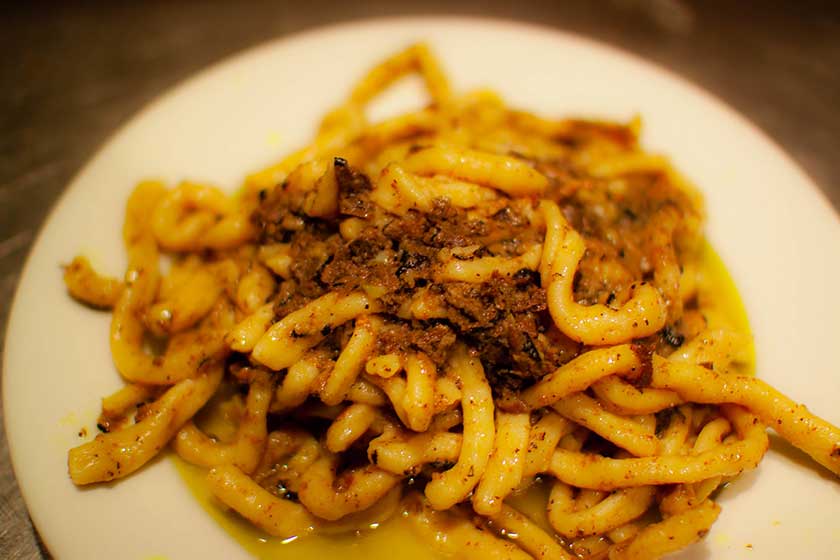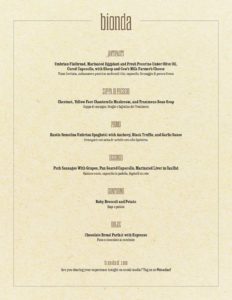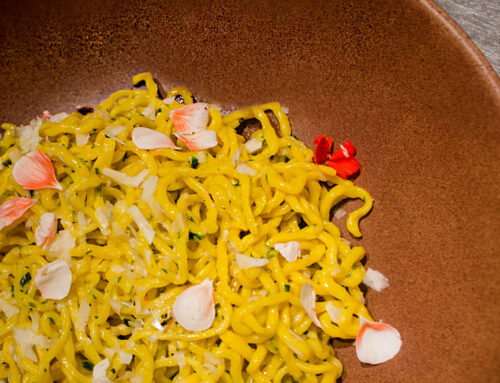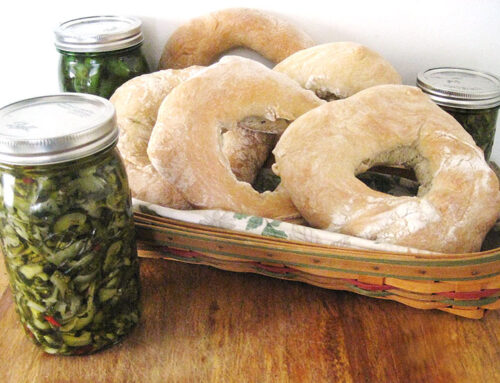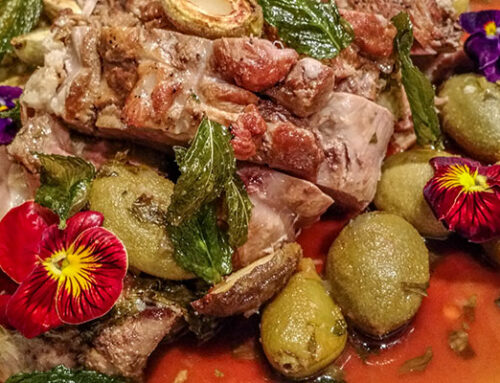EVENT DATE: DECEMBER 14, 2015
The region and its flavors
Umbria could be the heart of Italy. Geographically, it is, lying smack dab in the middle of the peninsula. Landlocked, it is mostly covered with mountains and plains and is often overshadowed by its popular neighbor, Tuscany. Umbrians have historically stayed in Umbria, with little migration to other areas of Italy, or the world. As a result, their cuisine is based on food that can be stored and produced locally— cucina povera, or peasant cooking. These traditional dishes use minimal ingredients and rely on local grains, vegetables, fresh herbs, and olive oil—which one might call Umbria’s liquid gold. Wild meat is also popular, while pork reigns. So much so, butcher shops specializing in pork have a specific name—norcinerie.
Let’s explore a few dishes from the menu…
Antipasti
Flatbread, Marinated Eggplant and Fresh Pecorino under Olive Oil, Cured Capocollo, Sheep’s Milk Farmer’s Cheese (Pizza lievitata, melanzane e pecorino sardo sott’olio, salame, formaggio di pecora fresco)
Sheep are more prevalent than cows in poorer areas of Italy, and in Umbria, sheep cheese, like pecorino, is abundant. Here, I crafted a soft, fresh-milk cheese, mixing sheep and cow milks.
Zuppa
Chestnut, Mushroom, and Trasimeno Bean Soup (Zuppa di castagne, funghi e fagiolini del Trasimeno)
Gorgeous Trasimeno beans in greens, browns, and whites, are the size of pebbles and cultivated around Lake Trasimeno—the region’s largest body of water. I balanced their earthy flavor with sweet chestnuts, and buttery Yellowfoot mushrooms.
Primo
Rustic Hard Wheat Umbrian Spaghetti with Anchovy, Black Truffle, and Garlic Sauce (Strangozzi con salsa di tartufo nero alla Spoletina)
One of the most esteemed gifts from Umbria is the Norcia truffle. Here, I mixed Norcia with a Pacific-Northwest strain of wild-foraged truffle, to celebrate the Italian tradition to eat locally. These American truffles are a different fungal strain than their Italian and French cousins, highlighting rum and chocolate flavors. The pasta, Strangozzi, is similar to Strozzapretti, but with a spaghetti length, and rolled by hand.
Secondo
Pork Sausages with Grapes, Pan-seared Capocollo, Liver in Calfat (Salsicce e uva, capocollo in padella, fegatelli in rete)
The sausages were spiced with an Umbrian blend including juniper berry and black pepper. Capocollo, is pork cut from the nape, which is not often available in the United States. Pork liver, which is generally more “gamy,” was marinated here in garlic cloves as a flavor enhancer (as is popular in the region, rather than as an overpowering flavor), for 24-hours before grilling.
Contorno
Baby Broccoli and Potato (Rapi e patate)
The broccoli and potatoes here were intentionally “overcooked” to add complexity to the world of al dente, crunchy, and bright vegetables. Well-cooked vegetables have an incredible flavor, which complemented the secondo’s richness.
- CLICK FOR LARGE DISPLAY

